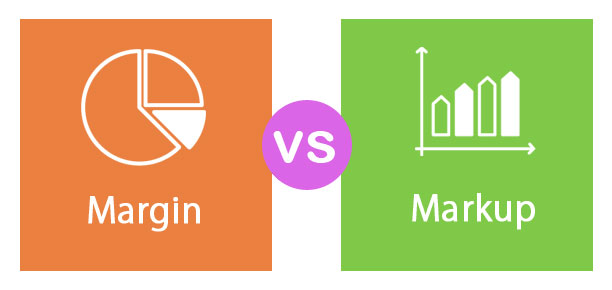The distinction between markup and margin may be summarized as follows: markup is the percentage through which the value of a product is raised to generate the selling price, while margin refers to the distinction between revenue and the COGS (Cost of Goods Sold). A misunderstanding of how these phrases should be used can facilitate the achievement of prices that are either too high or significantly too low prices, which, depending on the context, can result in a loss of customers or profits. Since extremely high or low prices may be considered outside of the pricing paid by rivals, there is also the possibility that there will be an unintended influence on the customer base.
Profit Margin vs. Markup are two distinct accounting concepts that, even though they both assess the same operation and utilize the same inputs, display quite various types of data. But the difference between Profit Margin and Markup is that their specific calculations, profitability, premiums, revenue, and expenses as a contribution. The primary difference between Profit Margin and Markup is that "profit margin" relates to revenue and fewer product costs sold. However, "markup" describes the amount from which the real amount of a product is raised to reach the final retail price.
A solid grasp of these two concepts is essential to ensuring that pricing decisions are made in a suitable manner. When prices are set in a way that is either too cheap or too expensive, it can lead to a loss of sales and earnings. Because the price may be significantly lower than the rates charged by rivals over time, a corporation's pricing strategy might unintentionally affect the business's market share over time.
It is essential to have a solid knowledge of the phrases "income," "cost of goods sold," and "net income." In a nutshell, revenue may be the sum of money that a company brings in by selling its products and services. The term "cost of goods sold" (or "COGS") determines the costs that are incurred as a result of the production or provision of products and services. Lastly, "gross profit" refers to whatever money remains after paying the costs of supplying a product or service to a customer.
What is Profit Margin?

The margin, commonly known as the gross margin, is calculated by subtracting COGS from sales revenue. A product's margin is $30 if it has a selling price of $100 and a cost of manufacturing of $50. Alternatively, the margin proportion is 30%, when expressed as a percentage (considered and evaluated as the margin divided by the purchases).
The percentage of a company's revenue after deducting the COGS is known as the profit margin. To get the profit margin, start subtracting the cost of products sold from the total revenue. On the other hand, the disparity is expressed in terms of total income. Then divide the total gross profit by the total revenue; one may calculate the gross profit as a proportion of total revenue. If a corporation sells an item for $100 but only costs $50 to make the goods, the company has a margin of $30. When calculated as a proportion, the profitability comes in at thirty percent.
What is Markup?

The quantity added to a good's value is elevated to calculate the market value, referred to as the premium for that product. Continuing with the previous illustration, the price of $100 is estimated by adding $30 to the base cost of $50. Alternatively, the premium percent is 42.9% when calculated as a proportion.
Markup refers to the amount by which a firm's trading price is higher than the cost that the company pays for the item. In most cases, the markup directly correlates to the amount of money a firm generates. Markup is the dissimilarity between the selling price of a product and its expense, but the percentage of margin is determined differently. Because the sales were $100 and the expenses were $50 in our previous example, the premium is identical to the operating income, which is $30. This happens because the profit was more significant than the costs, which were $30. On the other hand, the markup ratio is expressed not as a proportion of sales but rather as a % of costs.
Difference Between Profit Margin and Markup

If there is a lack of clarity regarding the difference between margins and markups, it is simple to understand how someone may get up in a critical situation when trying to derive pricing. Since the cost is used as the basic principle for the calculation method, you will need to increase the reasonable profit margin by a more significant amount than the quantity of the profit if you want to derive a particular margin. Since the cost estimate ought to be less than the earnings estimate, the markup percentage will need to be greater than the profit margin percentage.
Most Effective Methods of Margin and Markup
To determine whether the ideas of margin and markup were mixed or not, you are required to think about having the team of internal auditors analyze the pricing for a sampling of sale transactions. If this is the case, calculate the sum of money that has been wasted as a direct result of this problem, and if the amount is large, report it to the administration.
Suppose the disparity between the ideas of Profit Margin and Markup continues to generate confusion for the sales personnel. In that case, you might think about printing items that illustrate the markup amounts that should be used at various prices and handing those cards out to the sales crew. In addition, the tokens should define the distinction between the words "margin" and "markup" and provide examples of how the formulas for margin and markup are produced.



